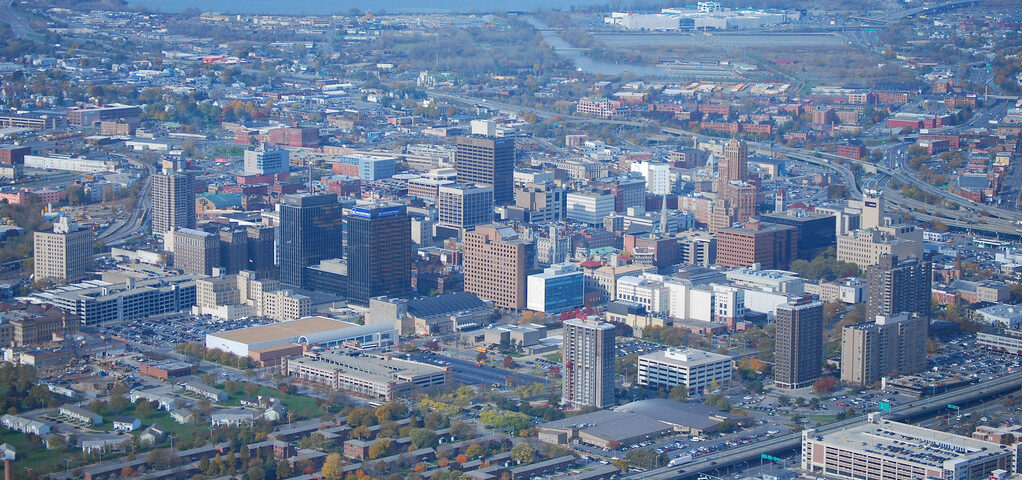
Guest Article: Jared Duggal, senior, Fayetteville Manlius High School
View Findings of Jared’s Research Project
Poverty is pervasive in America’s cities, and this is particularly true in Central New York. While our biggest cities’ challenges are often in the national spotlight, America’s small and midsize cities are home to more people, and their health disparities receive far less attention.
These health disparities are often driven by social determinants, those non-medical factors like income inequality, rent burden, and poverty that can influence health.
It is well established that higher poverty levels are associated with lower life expectancy, but several aspects of this relationship and the association of social determinants remain unclear. Although we know countries with a high poverty level have a lower life expectancy, the relationship is less clear when we look at the extent that gaps in life expectancy vary at the local city level. In addition, there is still debate on the importance of factors such as inequality, economic and social stress and how they relate.
With these questions unanswered, a research study was undertaken to evaluate how scarcity, poverty, health outcomes and equality relate and to determine what we can do in Central New York to improve them.
Data from publicly available databases including the US Census Bureau were utilized to create datasets of city poverty rates, life expectancy and 16 measured social determinants including number of households with a broadband connection, population that has completed high school, income inequality index, housing with potential lead risk, limited access to healthy foods and neighborhood racial/ethnic segregation.
A matching algorithm was then created that compared small/mid-sized US cities with the 25 highest and the 25 lowest poverty rates in order to help city leaders understand how poverty and health disparities in their communities are driven by social factors and allow comparison with demographically similar cities to guide future policy interventions.
The results were surprising:
- Life expectancy is statistically different depending on if you live in a US small to medium sized city that has high poverty compared to those that are in the low poverty group.
- Comparison of social determinants between cities in the high and low poverty groups also demonstrated significant differences in almost all the measured variables.
- Increased poverty rates were strongly correlated with increased smoking rates, excessive rent burden, credit insecurity, and neighborhood racial segregation.
- Increased poverty rates were strongly correlated with decreased high school completion rate, household access to broadband connection, and the income inequality index score (the lower the index score the more unequal the income distribution)
The paired matching algorithm successfully paired similar cities from the high and low poverty groups, including for cities in Upstate New York. The matching algorithm will help city leaders leverage policy and program approaches targeting poverty that will also advance health.
Recent efforts by the City of Syracuse to offer free, high-speed and secure Internet service for hundreds of low-income residents is a step in the right direction to addressing one of the social determinants of poverty. Understanding that poverty is a national emergency with implications to the longevity and health of all Americans is crucial. When an approach to addressing the social determinants of health has proven successful in a city of the same population demographic type, solutions can be found to facilitate smarter investment strategies.
References
- Braveman, P., Gottlieb, L., The Social Determinants of Health. Public Health Rep. 2014 Jan-Feb; 129: 19–31.
- Department of Population Health, NYU Langone Health. City Health Dashboard.
- United States Census Bureau.
- Duggal, J. Utilizing large sociological data sets and the development of a novel matching algorithm to understand the relationship between poverty, social determinants and health outcomes in small to mid-sized US cities.

Recent Comments